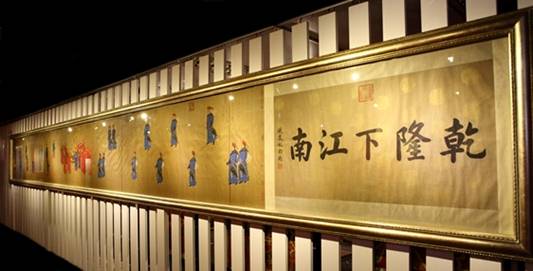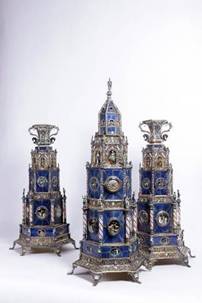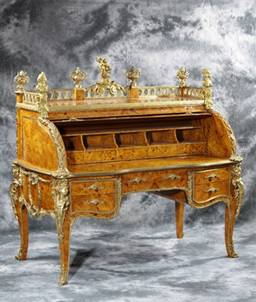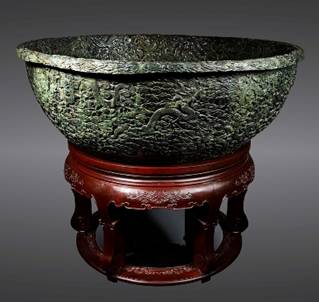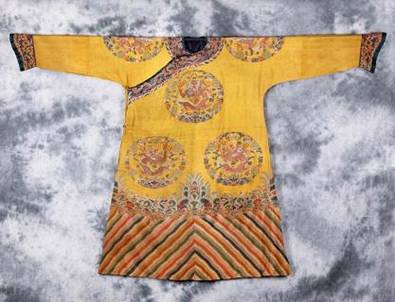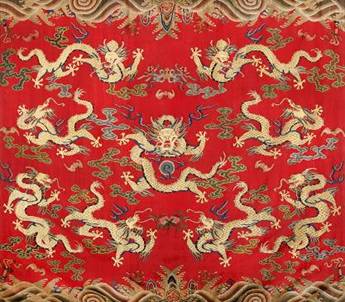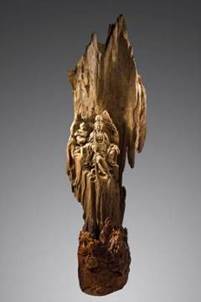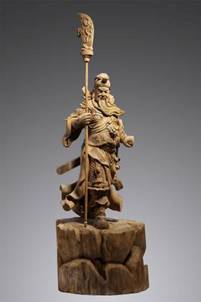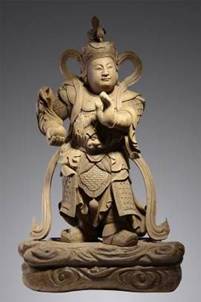 |

| PRESS ROOM |
| Press Release 19th February, 2013 Professor Paul Kan, CBE, Comm OSSI, Chevalier de la Légion d'Honneur, SBS, JP, Chair of Champion Technology Group and Chinese World Cultural Heritage Foundation, opens the Imperial Museum to further promote Peace and Harmony Professor Paul Kan, renowned connoisseur, Chair of Champion Technology Group and Chinese World Cultural Heritage Foundation, also a forerunner in promoting peace and harmony, “a central concept in Chinese culture”, sponsored and organized four “Peace and Harmony” exhibitions between 2007 and 2011 to showcase his personal collection of precious artifacts from around the world. As a response to the favourable public sentiment towards the exhibitions, Professor Kan decided to set up a permanent venue to display such artifacts, in the hope that peace and harmony may be brought to our society year round. The Imperial Museum is founded on this vision. In addition to the exhibits displayed at the previous “Peace and Harmony” exhibitions, the Museum will also showcase a series of artifacts that has never been displayed before. On 22nd February, The Hon. Tsang Tak-sing, GBS, JP, Secretary for Home Affairs, will join Professor Paul Kan to officiate the Opening Ceremony of the Imperial Museum. In co-operation with A Better Tomorrow, Chinese World Cultural Heritage Foundation, World Cultural Relics Protection Foundation, Institute of Agarwood, and the bequests of various collectors, the Imperial Museum will manage more than 200,000 artifacts and documents, which will be displayed on rotation. Located at St. John's Building, Garden Road, Central, Hong Kong, the Imperial Museum will display over 800 exhibits in two galleries: the Peace and Harmony Gallery, and the Aloes Gallery. The Peace and Harmony Gallery houses priceless treasures of exquisite craftsmanship. Imperial and noble artifacts of great cultural and historical value from the world are on display, among them, Imperial robes, Kesi silk tapestries, Qing nephrite vats, and western home furnishings from the 19th century. The Aloes Gallery highlights the historical origins of Hong Kong, as it was the planting of agarwood and the trading of incense that gave the name, Hong Kong (the " Incense Harbour "). Various precious art pieces and products of agarwood as well as related utensils are housed. At the opening of the Museum, most of the exhibits of the Aloes Gallery will be artifacts that were displayed at the 2011 “Peace and Harmony – The Divine Spectra of China's Fragrant Harbour with 108 Aloes of Sacred Scripture and Related Artifacts”, including Kinam and agarwood carvings of Buddhist statues, furniture, decorative pieces, ornaments, as well as agarwood pieces of various species. Also featured are a range of items relating to the incense culture such as censers, incense tools, incense vessels and perfume bottles from all over the world. In addition, an Austrian silver-gilt, enamel and lapis three-piece clock garniture created by Hermann Böhm from 1885, similar to those of the Green Vault Dresden collection, will be on display in the Museum, as a preview of the Western Imperial Collection of the upcoming “Peace and Harmony” exhibition. Professor Paul Kan expressed his vision for the promotion of peace and harmony with the opening of the Imperial Museum, “During the past few years, the ‘Peace and Harmony' exhibitions were well-received by the public; therefore I have decided to create a permanent venue to display the rare items shown in the previous exhibitions. This is the objective of the Imperial Museum. I hope that the exhibitions at the Museum will bring peace and harmony year round to our society, and spread the message of continuing international co-operation, beyond all differences and borders, for the common good and progress.” Imperial Museum St. John's Building, Garden Road, Central, Hong Kong Website: www.imperial-museum.org The Imperial Museum is a private museum, not a place for public entertainment. In consideration of security and public safety, visits are strictly by invitation and prior appointment of Friends of the Museum only, with priority given to schools and charities. Professor Paul Kan CBE, Comm OSSI, Chevalier de la Légion d'Honneur, SBS, JP Professor Paul Kan is the Founder and Chair of three information technology companies (Champion Technology Holdings Limited, Kantone Holdings Limited, and DIGITALHONGKONG.COM) which are listed on the Hong Kong Stock Exchange. Professor Kan is also Chair of A Better Tomorrow, Chinese World Cultural Heritage Foundation, and World Cultural Relics Protection Foundation. He is a fervent supporter of the information technology industry and is currently Chairman of Hong Kong IT Alliance and Honorary Chairman of the Hong Kong Information Technology Industry Council. As an aficionado and connoisseur of art and culture, Professor Kan is the Patron of International Foundation for Art Research,; Member of Arts and Treasures Evaluation Committee, Ministry of Culture, China, and Executive Committee Member of Hong Kong Youth Arts Foundation. Professor Kan's contribution to the development of technology, arts, and culture has received worldwide recognition. He was appointed Justice of the Peace by the Government of the HKSAR in 2006; awarded Commander of the most Excellent Order of the British Empire (CBE) by Her Majesty Queen Elizabeth II in 2006; Commendatore dell'Ordine della Stella della Solidarieta Italiana (Comm OSSI) by the Italian Prime Minister Hon. Romano Prodi in 2006; Chevalier de la Légion d'Honneur by the French Government in 2007; and Silver Bauhinia Star (SBS) by the Government of the HKSAR in 2009. In 2011, he was appointed Honorary Consul of the Republic of Hungary in the Hong Kong Special Administrative Region and the Macau Special Administrative Region. Selection of Imperial Museum exhibits
郎世寧 乾隆下江南 圖卷 - 紀曉嵐題
19 世紀奧地利維也納風格鎏銀琺瑯鑲寶石座鐘 ( 赫爾曼波姆鑲嵌,三件式,約 1885 年 ) - 此乃西方皇家藏品預展選樣
法國路易十五皇室風格鍍銅邊飾柱形書桌
清乾隆 和田碧玉龍紋大缸
清中期 緙絲明黃地十二章龍袍
緙絲紅地九龍圖
棋楠木雕童子拜觀音
沉香木雕關帝聖君像
沉香木雕韋馱菩薩 |
| Copyright © www.imperial-museum.org. All rights reserved. |

